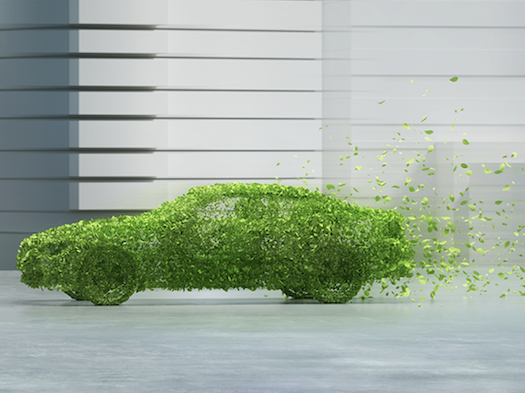 A week after the Biden administration’s March 20 edict on auto emissions – a proclamation heralded by some as the death knell for the internal combustion engine in the next decade – a disquiet has insinuated itself into the corridors of commentary. Even Washington Post columnists are worrying that the Biden administration may have gone too far.
A week after the Biden administration’s March 20 edict on auto emissions – a proclamation heralded by some as the death knell for the internal combustion engine in the next decade – a disquiet has insinuated itself into the corridors of commentary. Even Washington Post columnists are worrying that the Biden administration may have gone too far.
In a March 25 opinion piece, the Post’s Megan McArdle – whose political leanings cannot by the even most imaginative stretch be construed as sympathetic to Donald Trump – observed that the administration “risks a political backlash” as it seeks to force out gasoline-powered cars and force in electric vehicles (EVs). In McArdle’s words of warning, “consumers revolt against a technology that’s not ready for prime time.”

(iStock/Getty Images)
Her contention rests on a simple observation that appears to be invisible to the current occupants of the White House: the American consumer, who has not yet embraced the electric vehicle with the enthusiasm of Silicon Valley, might well revolt against this forced march towards electrification – a technology perceived as not yet ready to bear the weight of mainstream aspirations.
“It turns out there’s a big difference between selling an EV to a gung-ho early adopter and getting everyone else to make the switch from gas,” McArdle added.
~ ICEs Are Red, EVs Are Blue ~
Indeed, Stephen Moore points out that seven out of the 10 states with the most EVs are blue, or Democratic, while all 10 of the states with the fewest EVs are red, or Republican.
In fact, it seems that the stereotype of EV owners as affluent liberal trend-surfers is essentially true. They like to get credit with their friends and with Gaia for being on the green cutting edge, and yet they don’t actually drive their EVs that much – and certainly not for long hauls. Moreover, they typically have a second gasoline-powered car.
By contrast, folks in red states rely on their gas-powered vehicles and drive them more and farther – so they’re very conscious of being able to fill up their gas tank to get where they need to go.
* 7 out of the 10 states with the most EVs are deep blue states.
* All 10 of the states with the fewest EVs are red states.
* The bottom line: Nearly half the country refuses to buy electric vehicles. [LINK]
— Stephen Moore (@StephenMoore) March 20, 2024
This red–blue divide on cars seems certain to factor into the 2024 presidential election. Yet in the meantime, Breitbart News’ Jim Pinkerton makes an interesting point about the Biden plan:
There’s a way to address the issue of CO2 without taking away people’s internal combustion engine (ICE) cars. In fact, a rethink on the value of carbon – as a valuable raw material, not as a pollutant – could be the basis of a whole new industry.
If we dig into the details of the Biden plan, we see it is intended to reduce atmospheric carbon dioxide by seven billion tons over the next three decades. So, now let’s drill down a little on that total of seven billion tons of CO2. First off, all the carbon dioxide in the atmosphere is barely over 0.04 percent of the total mass. That doesn’t seem like such a huge number, but the greens say they have figured out precisely what it should be. They say it should be .035 percent (350 parts per million).
Okay, let’s drill down some more. Of that seven billion tons of CO2, just two billion tons is actual carbon – the rest, of course, is oxygen. It’s the carbon that worries the greens so, hence all the many odes to the urgency of “decarbonization”.
Two billion tons of carbon is a lot, but compared to what? After all, the earth is huge – the total weight of the planet is about 6.5 sextillion tons (that’s 21 zeroes) – and so is its atmosphere: The air above weighs 5.5 quadrillion tons.
Of that immense total in the sky, carbon accounts for some 720 billion tons. We’re increasing that quantity, scientists tell us, by 12 billion tons a year.
But the earth is pretty darn big. So, let’s compare carbon to carbon. Specifically, how much carbon is all around us? The human body, for instance, is about 18 percent carbon and so is just about every other animal (yes, we and all the critters are carbon sinks).
~ The Carbon Market Solution ~
In addition, all the world’s forests hold about 861 billion tons of carbon. We can immediately see: If we could bump up the carbon sink of trees by just a smidgen, we would more than soak up (the two-dollar word is sequester) the two billion tons of carbon that the Biden administration wants to make go away. In fact, back in 1990, President George H.W. Bush suggested just this – planting more trees as a way of sequestering carbon.

A view over the tops of trees to the Smoky Mountain range in Tennessee. (iStock/Getty Images)
Trees aren’t the only carbon sink. The oceans harbor carbon, too, absorbing an estimated quarter of all CO2 in the atmosphere. Amusingly, the World Economic Forum recently admitted that estimates of carbon in the ocean were off by nearly two-thirds. They had thought the oceans were absorbing 43 billion tons of CO2, but the real number was 67 billion tons. (But don’t let such mis-estimates cloud your confidence in the overall modeling process!)
In addition to all the natural carbon sinking, there’s the emerging industry of carbon capture and storage. Right now the industry is mostly focused on getting carbon out of the atmosphere, and yet some scientists and entrepreneurs think that carbon could the basis of whole new industries. Carbon is, after all, a wonder element, being central, in the summary of Chemistry Industry Digest, to proteins, carbohydrates, fats, DNA, RNA, as well as synthetic polymers such as nylon, polyethylene, polystyrene. Also steel, nanotubes, pharmaceuticals, and on and on. Carbon is, in fact, the fourth-most common element in the universe.
Breitbart’s Pinkerton has been making the case for carbon for a long time. Back in 2019, he wrote a piece for Breitbart News headlined, “How to Make Rural America Great Again.” The idea was that if the rich blue dots want to get rid of carbon, the red zones should agree, for a fee, to take it off their hands. As he wrote five years ago, “We burn the fuel for the sake of the economy and then we capture the carbon for the sake of the environment. And if so, then there are jobs at both ends of the equation: first, jobs extracting the carbon; second, jobs capturing the carbon.”

(iStock/Getty Images)
The essence of a circular carbon economy is that the byproducts of production are cycled back into more production. The more efficient the process, the better the process. So, circularity is not just good environmental policy, it’s good productivity policy, and so good economic policy. And all this streamlining makes for good investments, as we see that we can burn all our carbon fuels and then make new things with the captured carbon.
It’s possible, of course, that the Biden car emissions rule will be rendered moot later this year. If Donald Trump wins in November, he will likely cancel the Biden plan. And that will be fine with ICE-minded motorists, carbon-fuel producers, and all those who think Americans should be free to choose their own mode of transportation.
Yet still, over the long run, we will want to make good use of more of the carbon with which this planet has been endowed. Carbon is THAT valuable, and we could all use the money.
John Carney – Breitbart Economics Editor
Alex Marlow – Breitbart Editor-In-Chief and
Jim Pinkerton for
Breibart Business Digest
April 8, 2024
